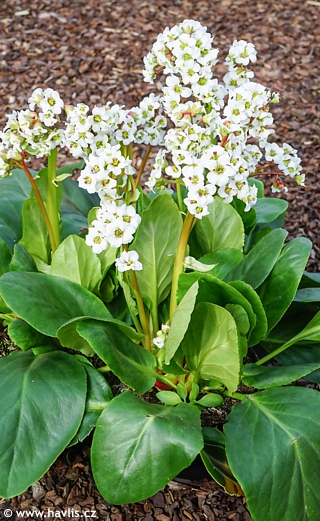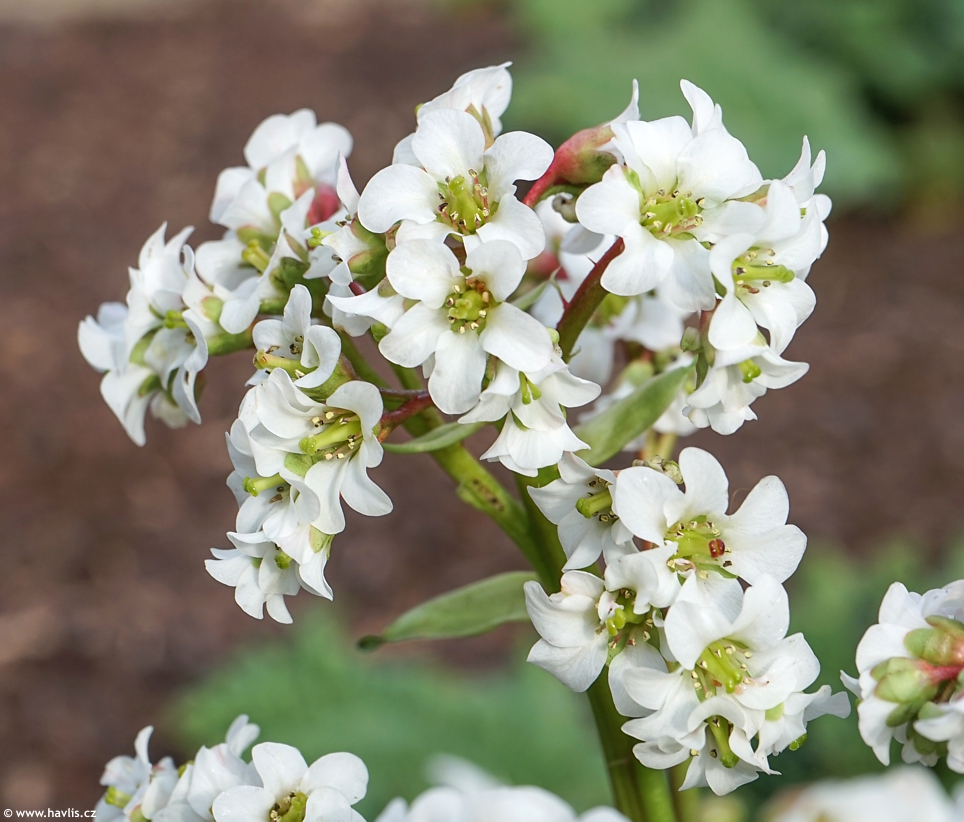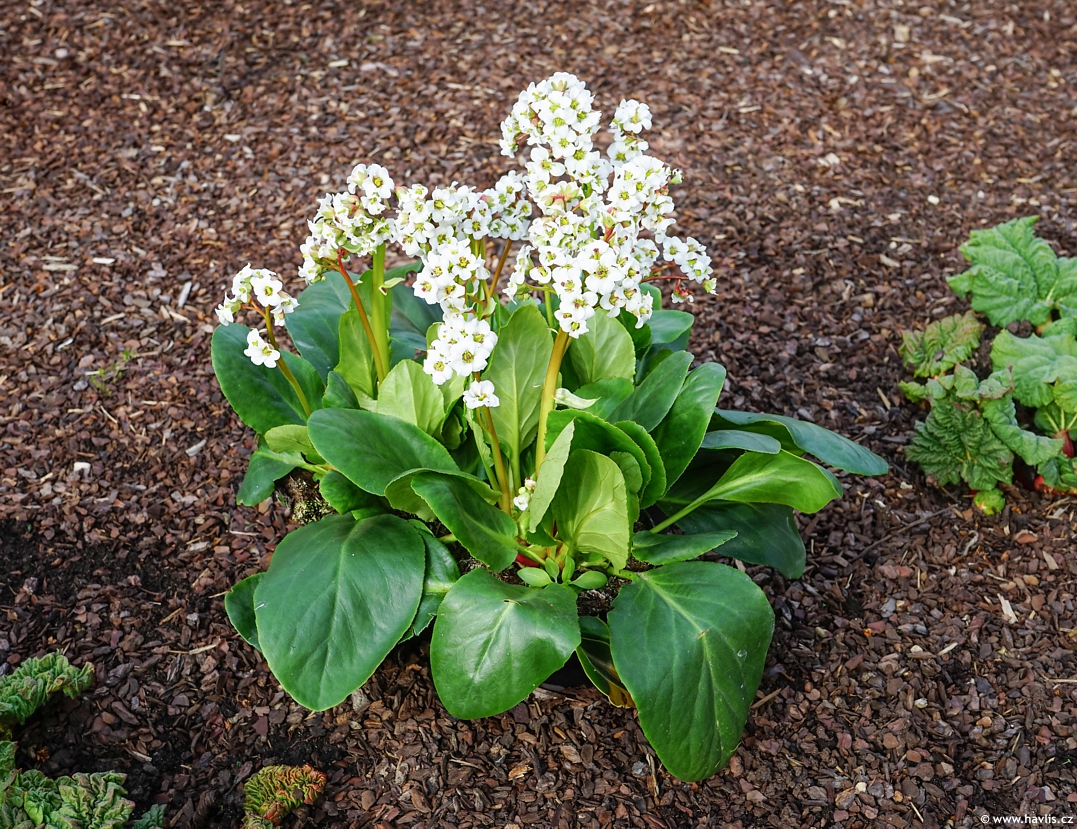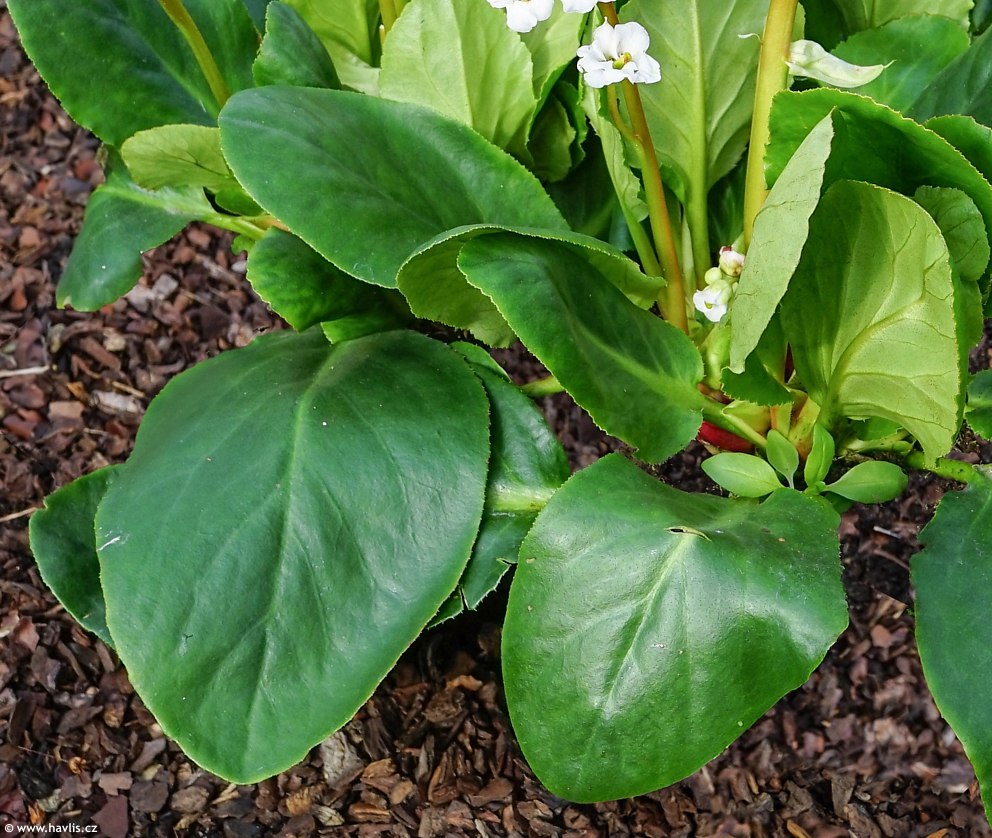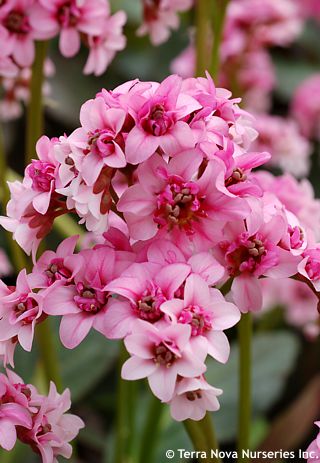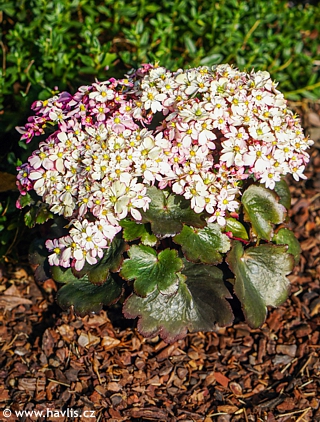Bergenia 'BRESSINGHAM WHITE' elephant's ears
size/type
low or groundcovering,low perennial
usual height
0,2-0,3m
usual width
0,3-0,5m
leaves
evergreen broadleaf
colour of leaves
flowers
showy
colour of flowers
blooming time
April-May
location
full sun to shade
soil type
any (acidic to alkaline)
soil moisture requirements
evenly moist (dislikes drought)
USDA zone (lowest)
3 (down to -40°C)
winter protection
for zone 5+6

for zone 7

categorized
Bergenia
Elephant’s ears is a great name that best characterizes leaves of this perennial. They are truly shaped like real ears of baby elephants. Most varieties change their colour in autumn and winter, adding extra interest to perennial beds, among shrubs or small trees, covering difficult slopes, or making a winter window pot looking especially attractive, combined with dwarf conifers or small-leaved plants like hebes. Bergenia was described by German botanist Conrad Moench (1744-1805) and named in honour of another German botanist Karl August von Bergen (1704-1759).Description of the plant:
Bressingham White is a spectacular variety of elephant’s ears with unusual flower colour: white. It begins to bloom along with the first spring flowers from late March or early April. One might think that after a winter full of snow, white color would be banned, though, rest assured that just one look into its pristine, chaste flowers will make you fall in love with it. They are so cute, innocent, and elegant that you will do anything to find the plant a pretty spot even in a crowded garden. Flowers appear in abundance atop 20-30 cm tall stems and take on pale pink hues as they mature. Those are fleshy and green with orange-red hues when they split as they form the inflorescence. Blooming lasts for almost 8 weeks and sometimes a few flowers sporadically pop up in late summer.Leaves are evergreen, large, broadly oval to almost rounded, dark olive green from spring till autumn and then, if they get enough sun, they take on various degrees of burgundy red hues for the whole of autumn and winter. They are best used in places where you can appreciate greenery also in winter, and at the same time where you want to protect the soil from drying out since they create so much shade underneath that they are an ideal alternative to mulching.
Bressingham White bergenia was bred and introduced by British horticulturist Alan Bloom (1906-2005), who was just half a year away from reaching a fantastic age of 100 years. During his lifetime, he introduced over 170 new and hardy perennials, and was especially famous as the founder of the Bressingham Gardens, located approximately 100 miles northeast of London, England, on which he began to work in 1953. The garden is a Mecca for all plant lovers, especially perennials, of which there is a breathtaking collection. But you will also find many shrubs, trees, and conifers and these were mostly planted and loved by his son Robert. Bressingham White bergenia received the prestigious AGM (Award of Garden Merit) award for beauty and reliability from the Royal Horticultural Society of England (RHS).
Bergenia is a spreading, ground covering perennial with tough rhizomes. It likes moist but well-drained soil, rich in humus but will grow in almost any soil. Growing it in full sun will guarantee profuse flowering and richer foliage colours in autumn and winter. Avoid areas with constant drying winds. Its hardiness is at least -37 °C (USDA zone 3), yet it benefits from mulching.
Last update 29-03-2024
QUICK PRICE OVERVIEW
CURRENTLY SOLD OUT
WANT TO TRY A SIMILAR PLANT?












